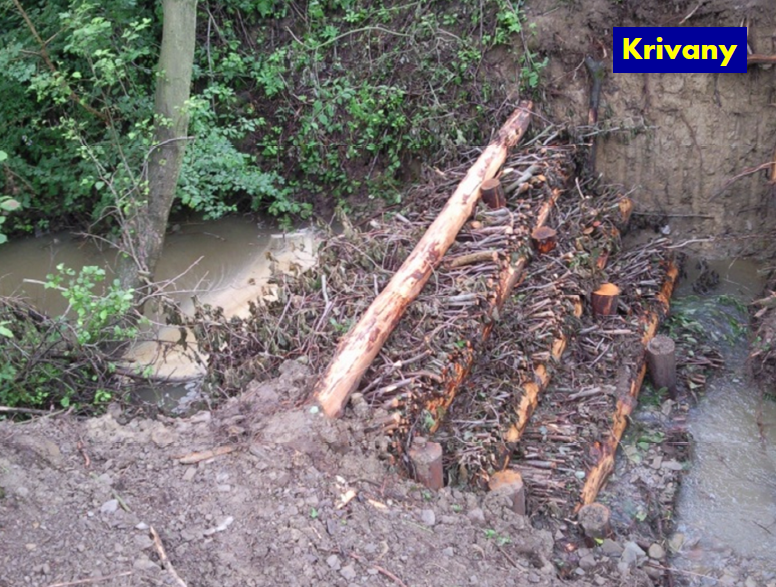Sediment capture ponds are engineered ponds placed in networks of forest ditches to slow the velocity of water and cause the deposition of suspended materials. Sediment capture ponds are most useful for managing the effects of ditch construction and maintenance, road work and final feeling. While used primarily in forests, sediment capture ponds may be a useful temporary measure for preserving water quality in and around construction sites or mines. They may also be useful for capturing sediment in agricultural runoff. Sediment capture ponds have a limited lifespan, depending on how much suspended material is in the inflowing water. However, ponds can be maintained by removal of accumulated sediment. As most water protection methods, sediment capture ponds function well during base and moderate flow events. Catchment area, hydraulic properties of ditches, discharge rate and soil characteristics are among factors influencing functioning of sedimentation capture ponds. Effective functioning largely depends also on expertise and skill of professionals designing and implementing this and also many other measures.

Sediment capture pond, Slovakia
Source: Michal Kravcík’s presentation, NWRM Workshop 1 (Slovakia)
| Benefits | Level |
|---|---|
|
BP1 - Store runoff
|
Medium
|
|
BP2 - Slow runoff
|
Medium
|
|
BP3 - Store river water
|
Low
|
|
BP4 - Slow river water
|
Low
|
|
BP6 - Increase infiltration and/or groundwater recharge
|
Low
|
|
BP7 - Increase soil water retention
|
Low
|
|
BP8 - Reduce pollutant sources
|
High
|
|
BP9 - Intercept pollution pathways
|
High
|
|
BP10 - Reduce erosion and/or sediment delivery
|
High
|
|
BP12 - Create aquatic habitat
|
Low
|
|
ES1 - Water storage
|
Medium
|
|
ES2 - Fish stocks and recruiting
|
High
|
|
ES4 - Biodiversity preservation
|
High
|
|
ES5 - Climate change adaptation and mitigation
|
Low
|
|
ES6 - Groundwater/aquifer recharge
|
Low
|
|
ES7 - Flood risk reduction
|
Medium
|
|
ES8 - Erosion/sediment control
|
High
|
|
ES9 - Filtration of pollutants
|
High
|
|
PO1 - Improving status of biology quality elements
|
Low
|
|
PO2 - Improving status of physico-chemical quality elements
|
Low
|
|
PO3 - Improving status of hydromorphology quality elements
|
Low
|
|
PO4 - Improving chemical status and priority substances
|
Low
|
|
PO7 - Prevent surface water status deterioration
|
High
|
|
PO9 - Take adequate and co-ordinated measures to reduce flood risks
|
Low
|
|
PO10 - Protection of important habitats
|
Low
|
|
PO11 - Better protection for ecosystems and more use of Green Infrastructure
|
Medium
|
|
PO12 - More sustainable agriculture and forestry
|
High
|
|
PO13 - Better management of fish stocks
|
Medium
|
|
PO14 - Prevention of biodiversity loss
|
Medium
|
